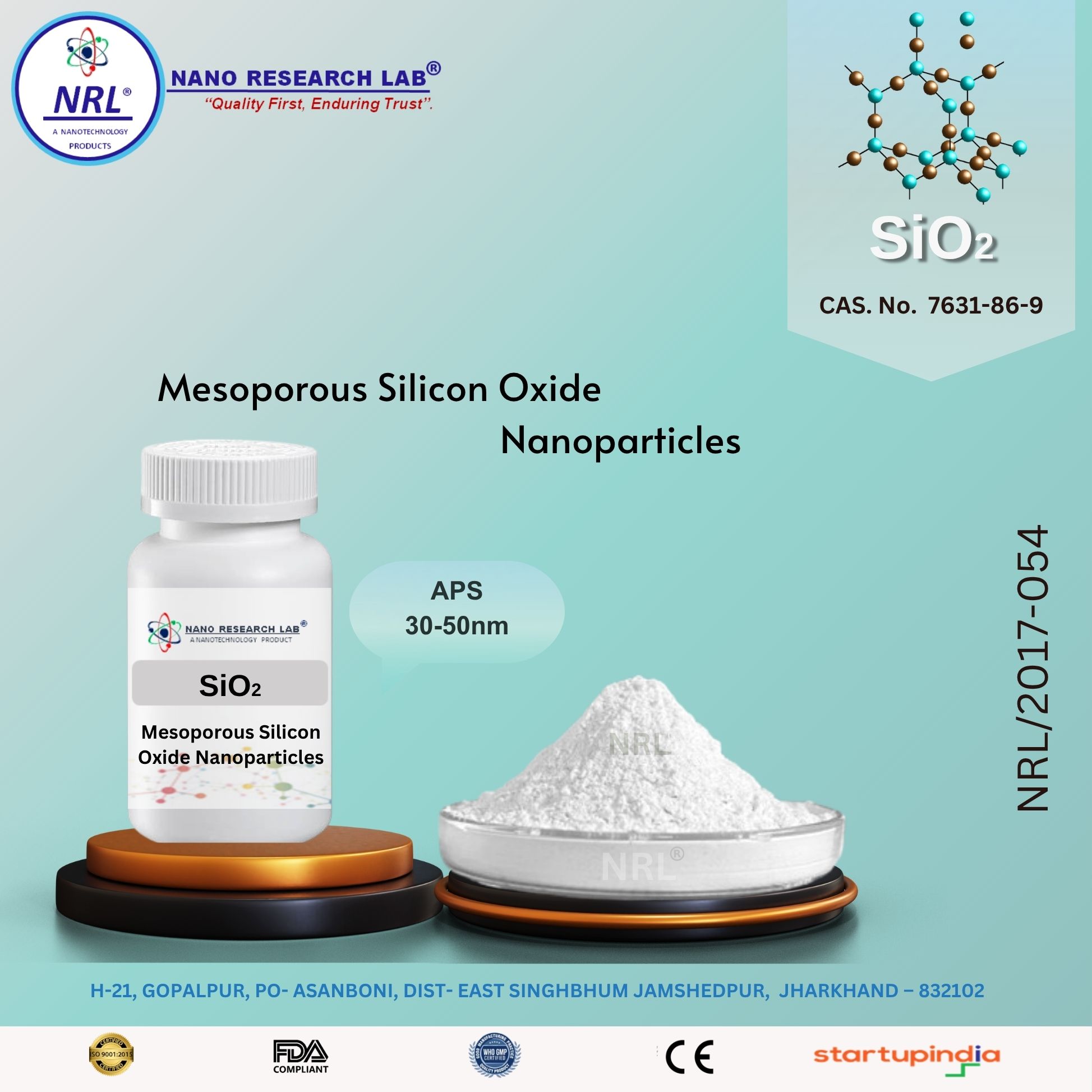
Mesoporous Silicon Oxide Nanoparticles/Nanopowder (SiO2, 30-50nm, purity 99.5%)
₹4490.00
Mesoporous Silicon Oxide Nanoparticles / Nanopowder (SiO₂, 30–50 nm, Purity 99.5%)
⚙️ Technical Specifications
Property | Specification |
|---|---|
Product Name | Mesoporous Silicon Oxide Nanoparticles / Nanopowder |
Chemical Formula | SiO₂ |
Purity | ≥ 99.5% |
Particle Size | 30–50 nm |
Appearance | White to off-white fine powder |
Surface Area (BET) | 150–300 m²/g (mesoporous) |
Pore Size | 2–50 nm |
Pore Volume | 0.5–1.2 cm³/g |
Density | ~2.2 g/cm³ |
Melting Point | ~1600°C |
Solubility | Insoluble in water, soluble in strong alkalis |
Morphology | Spherical mesoporous nanoparticles |
CAS Number | 7631-86-9 |
🌟 Key Features
High purity (≥99.5%) and controlled particle size (30–50 nm)
Mesoporous structure with large surface area and high pore volume
Excellent thermal and chemical stability
Biocompatible and environmentally safe
Uniform morphology and high dispersibility in aqueous and organic systems
Suitable for drug delivery, catalysis, adsorption, and coating applications
🔬 Applications (in Detail)
1. Drug Delivery & Biomedical Applications
Mesoporous SiO₂ nanoparticles are widely used in nanomedicine due to their high surface area and pore volume.
Used as carriers for controlled drug release and gene delivery.
Functionalized SiO₂ can target specific tissues or cancer cells.
Acts as a contrast agent in imaging and biosensing applications.
2. Catalysis
The large surface area and mesoporous structure make SiO₂ an excellent catalyst support.
Supports metal nanoparticles for heterogeneous catalysis.
Used in chemical reactions such as oxidation, hydrogenation, and coupling reactions.
Provides improved reactivity and selectivity for catalytic processes.
3. Adsorption & Environmental Applications
Mesoporous SiO₂ nanoparticles are highly effective for adsorbing pollutants and gases.
Used for water purification, removal of heavy metals, dyes, and organic contaminants.
Applied in gas adsorption and storage due to tunable pore sizes.
4. Sensors & Electronics
SiO₂ nanoparticles are widely used in electronic devices and sensor technologies.
Acts as a dielectric material in semiconductors and microelectronics.
Used in chemical and biosensors due to high surface reactivity.
5. Coatings & Composites
Mesoporous SiO₂ nanoparticles improve the mechanical, thermal, and optical properties of polymers and coatings.
Used in anticorrosive, anti-reflective, and protective coatings.
Incorporated in polymer nanocomposites to enhance strength and stability.
6. Photocatalysis & Energy Applications
Acts as a support for photocatalysts like TiO₂ and ZnO for solar energy harvesting and pollutant degradation.
Used in energy storage devices, supercapacitors, and photoelectrochemical cells.
